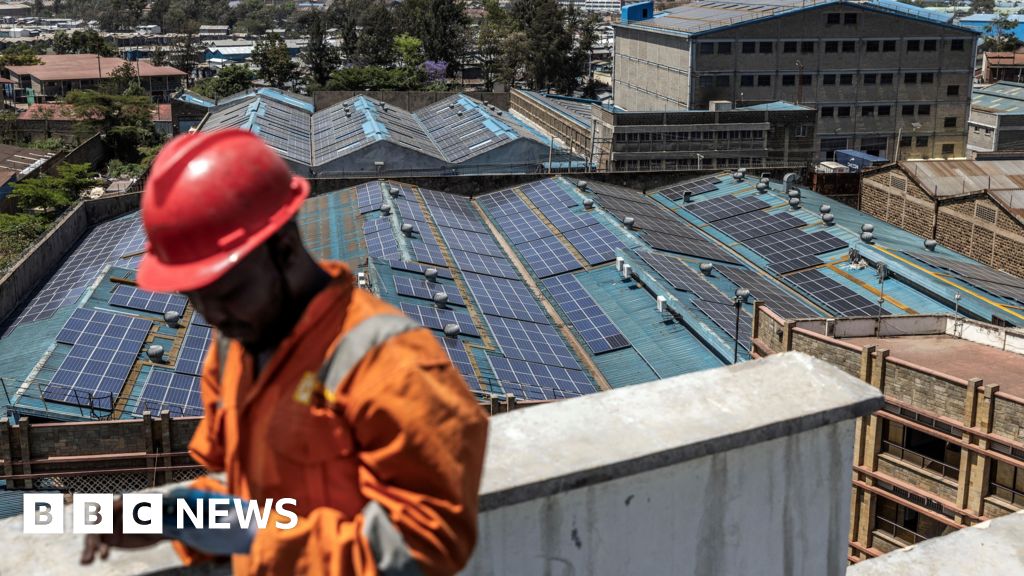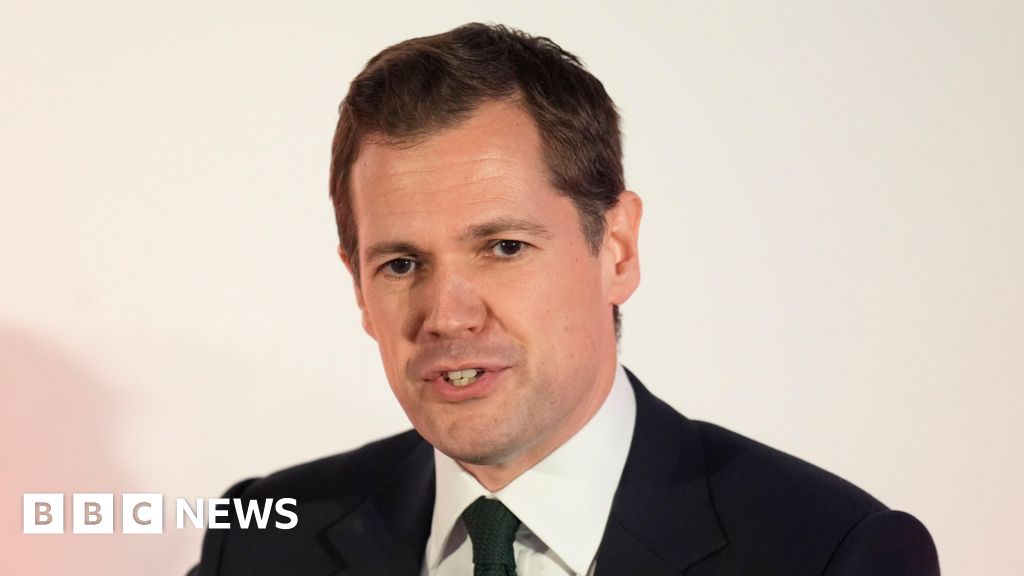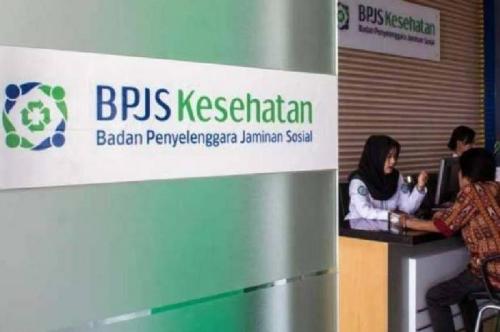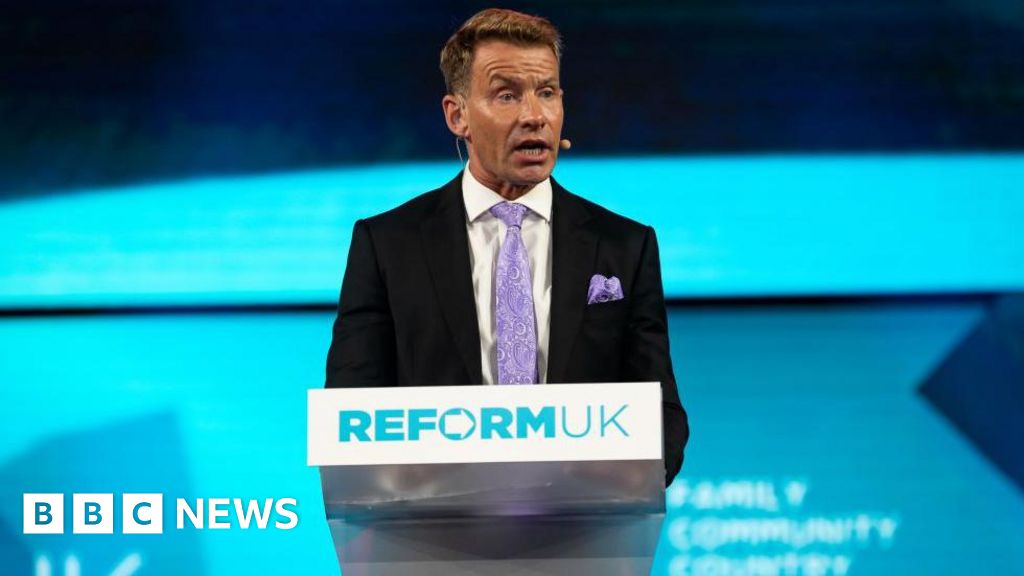Phil LeakeData journalist and Munaza RafiqDisability producer

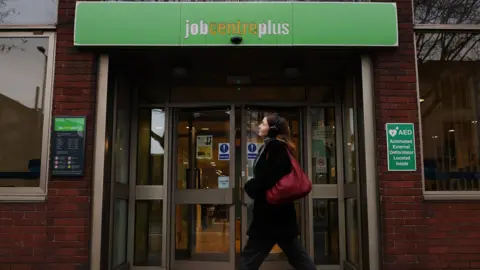 EPA
EPA
Job centre work coaches say they are struggling to find employers who can accommodate disabled people and get them into work.
The BBC spoke to two work coaches, who said opportunities are hardest to come by for those with long-term health conditions who may require a level of flexibility or additional support.
It comes as new data obtained by the BBC from the Department for Work & Pensions (DWP) suggests that the number of job seekers finding work each month is falling.
The DWP says they are "reforming a broken system by shifting our focus from welfare to work, skills and opportunities - backed by £1bn a year for employment support by the end of the decade".
Mark Byers, a work coach of 15 years and a Public and Commercial Services Union rep, says there is a lack of employers able to provide support in the workplace for those with long-term health conditions.
He says work coaches are being stretched as they try to manage their caseloads, adding that his own workload has increased dramatically since he started the job.
"It feels like you are fighting with one arm behind your back," he says.
"All appointments are 10 minutes, and once you've got through the security checks there is not much time. These short appointments mean you're just being a benefits policeman."
According to latest estimates, just over half (53%) of working-age disabled people are employed, compared with more than four in five (82%) non-disabled people.
The disability employment rate has not improved since 2019.
Overall, the average proportion of benefits claimants successfully finding work each month - known as the into-work rate - has fallen too.
It was 7.6% in the year to April 2025, below pre-pandemic levels and down from almost 10% in mid-2022.

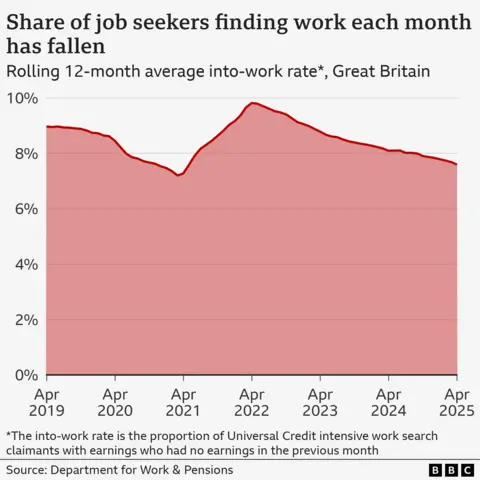
There were 16,640 work coaches employed by the DWP in August, according to data obtained through a Freedom of Information (FOI) request - the lowest number since March last year and well below the Covid peak of more than 23,000 in 2021.
But the DWP now projects that it has more work coaches than it needs, having estimated a shortfall of thousands earlier in the year.
It has created spare capacity by reducing the amount of support for claimants across the country, including shortening initial meetings and cutting the number of follow-up appointments.
Previously, the Public Accounts Committee criticised what it called the DWP's "seemingly complacent assurances that this reduction in support has had minimal impact on claimants".
In March, the government said it wanted to redeploy 1,000 work coaches to provide personalised and "intensive" support to thousands of sick and disabled people.
The redeployed work coaches are not new recruits, but ministers hope they will help with the government's ambition to achieve an 80% overall employment rate and cut the rising cost of health and disability benefits.
Saul Cahill, a work coach at a busy job centre in Gateshead and another PCS Union rep, says people with health conditions and disabled people are often the most difficult to support into work.
He says delays in other services like the NHS mean it can take longer to find someone suitable employment.
One person he has been supporting, who he says has been "really engaged" in their search for work - despite having a long-term health condition which means they are not required to do so - has been in his caseload since he started four years ago.
Many employers are simply not able to accommodate some disabilities, Saul says, while time constraints also mean he can not help them as much as he would like.
"I might be sitting with someone who is, on paper, doing all the right things and doesn't seem to be getting any response," he says.
"I'd love to sit down with them [and] go through the job applications together, and that's not necessarily possible.
"People get very frustrated."
Around 1.6 million universal credit claimants are in what's known as the "intensive work search" category.
They are fit and able to work, but are either not working or working with very low earnings.
These claimants require significant support from a work coach, including meeting weekly for the first 13 weeks of their claim, and either weekly or fortnightly after that.
Almost 300,000 intensive work search claimants have been job-seeking for more than five years, 18% of the total.

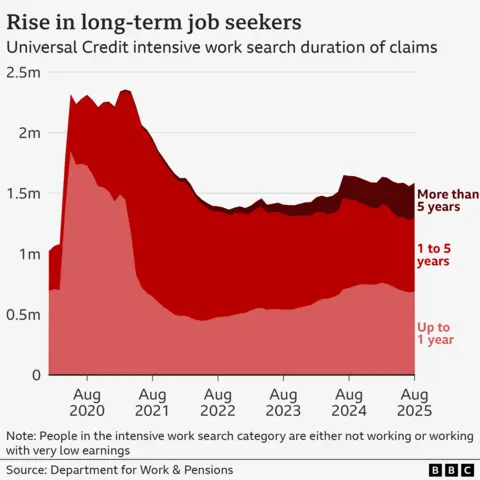
Data from August shows there were 95 intensive work search claimants for every work coach.
Job centre funding allows for an average caseload of around 100, according to the National Audit Office (NAO).
But there are regional differences in the average caseloads being managed by work coaches around the country.
Caseloads were highest in Birmingham and Solihull, with an average 115 claimants per work coach, and lowest in South West Wales with 79.
Across Great Britain, the number of people claiming universal credit with no requirement to work - including those deemed unable to work due to ill health - has surged from fewer than 700,000 in January 2020 to more than 3.8 million in August 2025.
Part of the rise in claims is due to people moving on to universal credit from previous benefits, such as employment and support allowance (ESA).
But analysis by the Resolution Foundation think tank shows there has also been a genuine rise in the number of people out of work due to ill health.

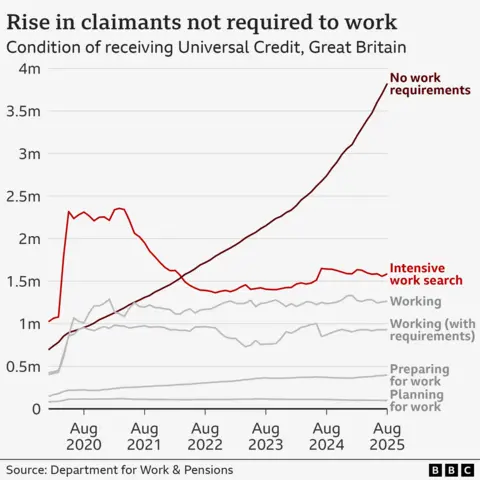
In September, the new work and pensions secretary Pat McFadden said reform of the welfare system "must happen" to support people into work and address the rising cost of benefits.
Over the summer, the government walked back on its attempt to cut nearly £5bn off the disability and health-related benefits bill as it faced a rebellion of Labour MPs.
Many of the more significant changes are now subject to a review by disability minister Sir Stephen Timms.
But McFadden said welfare reform was "happening all the time", adding that he would not rule out any changes.
The current system is "not getting the help to people who could work", he added.
A DWP spokesperson said ministers were "delivering the biggest reforms to job centres since the early 2000s to end the tick box culture, giving staff the flexibility to offer a more personalised service to jobseekers and help them into good, secure jobs".
"To help areas with the highest levels of economic inactivity we are rolling out a programme to connect offers of work, health and skills support for the people who need it."
.png)
 4 hours ago
1
4 hours ago
1




